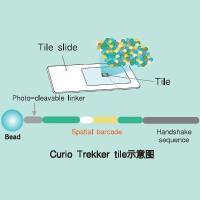Identification of G-Protein-Coupled Receptor Phosphorylation Sites by 2D Phosphopeptide Mapping
Reversible phosphorylation is important for G-protein-coupled receptor (GPCR) signaling, desensitization, and endocytosis, yet the precise location and role of in vivo phosphorylation sites is unknown for most receptors. This chapter describes a powerful analytical method for the direct identification of GPCR phosphorylation sites by two-dimensional (2D) phosphopeptide mapping. The GPCR of interest is isolated from 32 P-labeled cells by immunoprecipitation and transferred to nitrocellulose membranes. In situ cleavage by trypsin releases phosphopeptides that are separated by a combination of high-voltage electrophoresis and chromatography. Phosphoamino acid analysis and Edman sequencing of isolated phosphopeptides reveals information that can lead to the direct identification of GPCR phosphorylation sites. Furthermore, the 2D phosphopeptide mapping technique allows the analysis of temporal and positional changes in the GPCR phosphorylation pattern under different physiological conditions.
![预览]()






